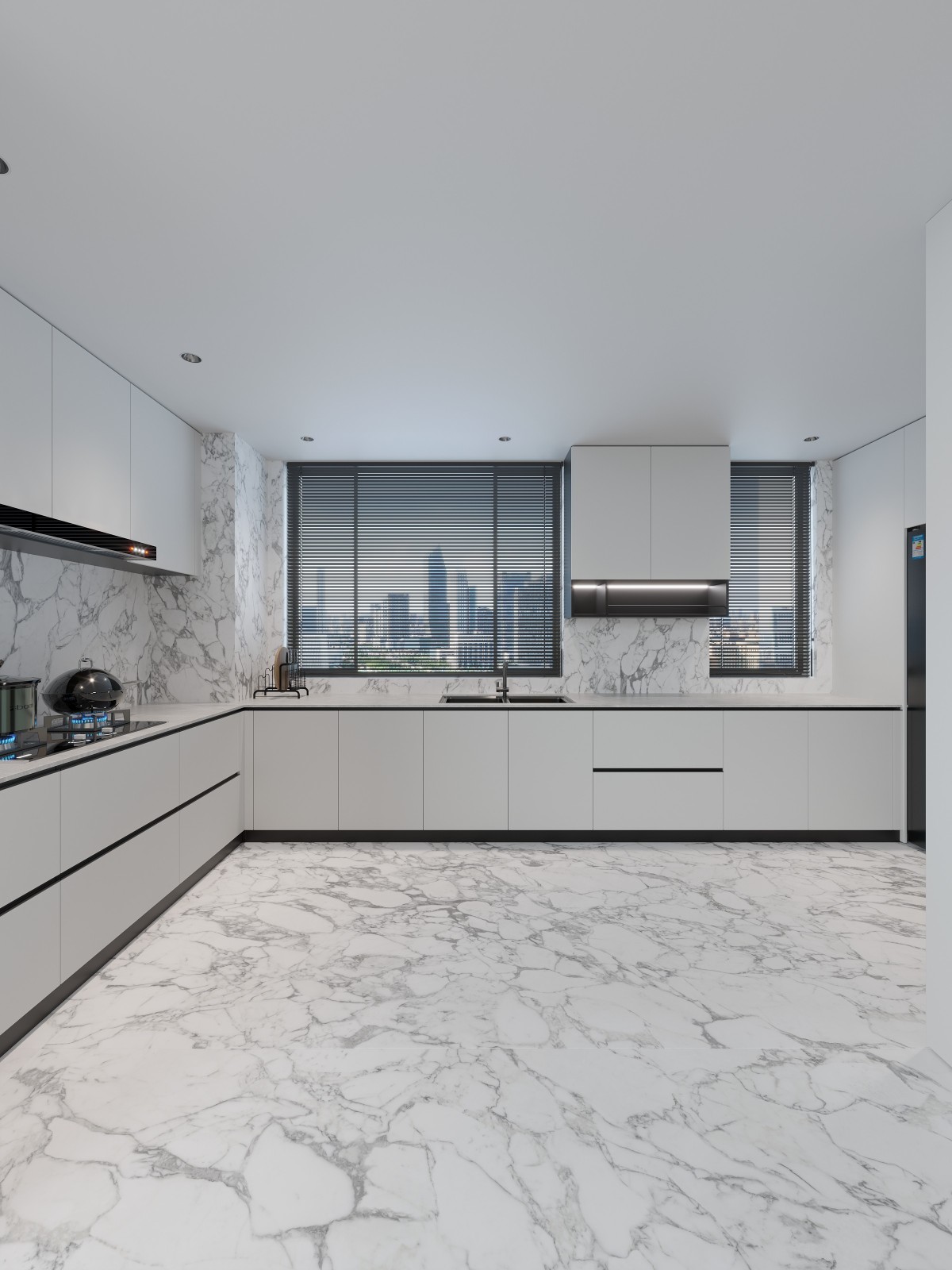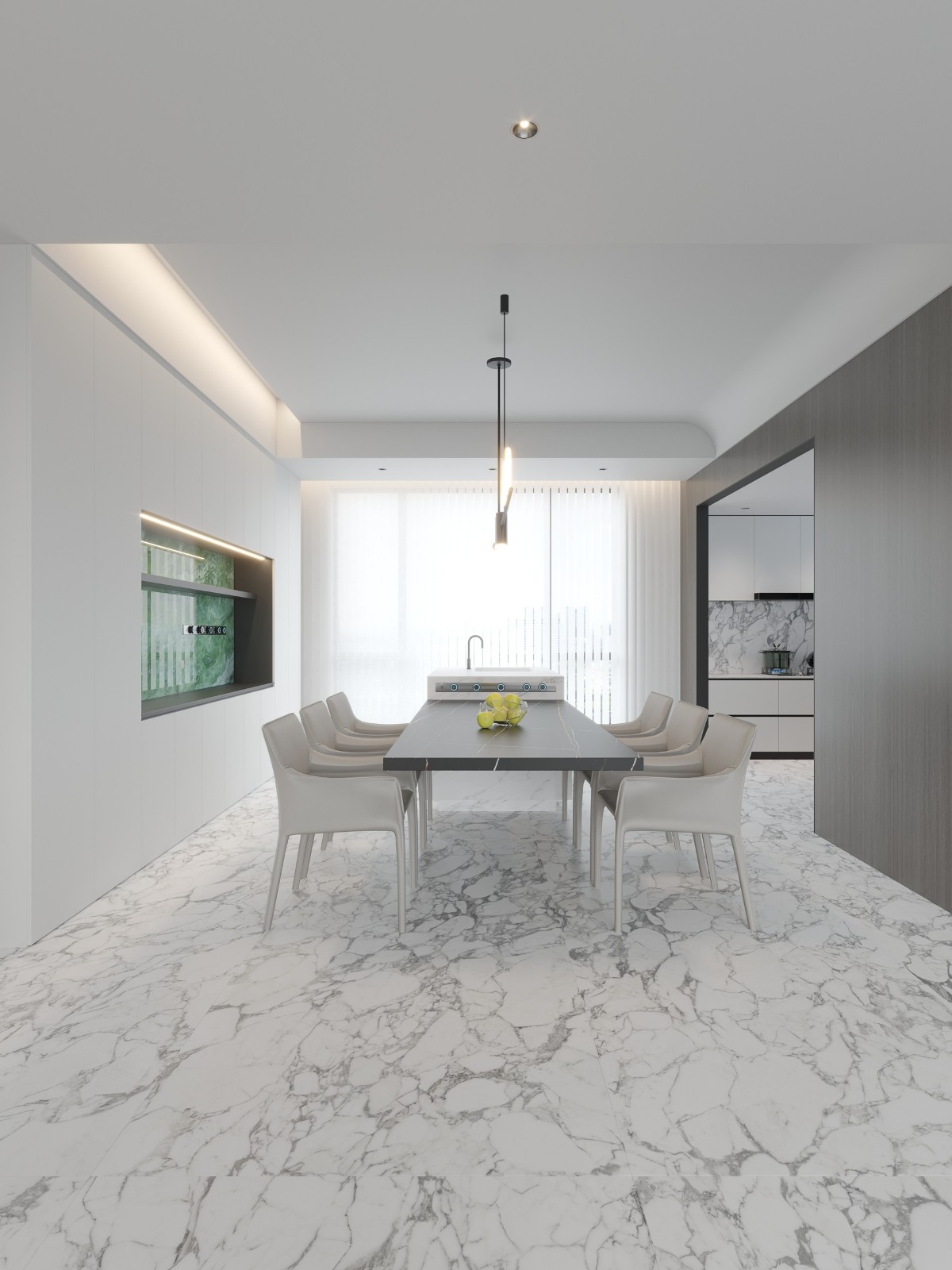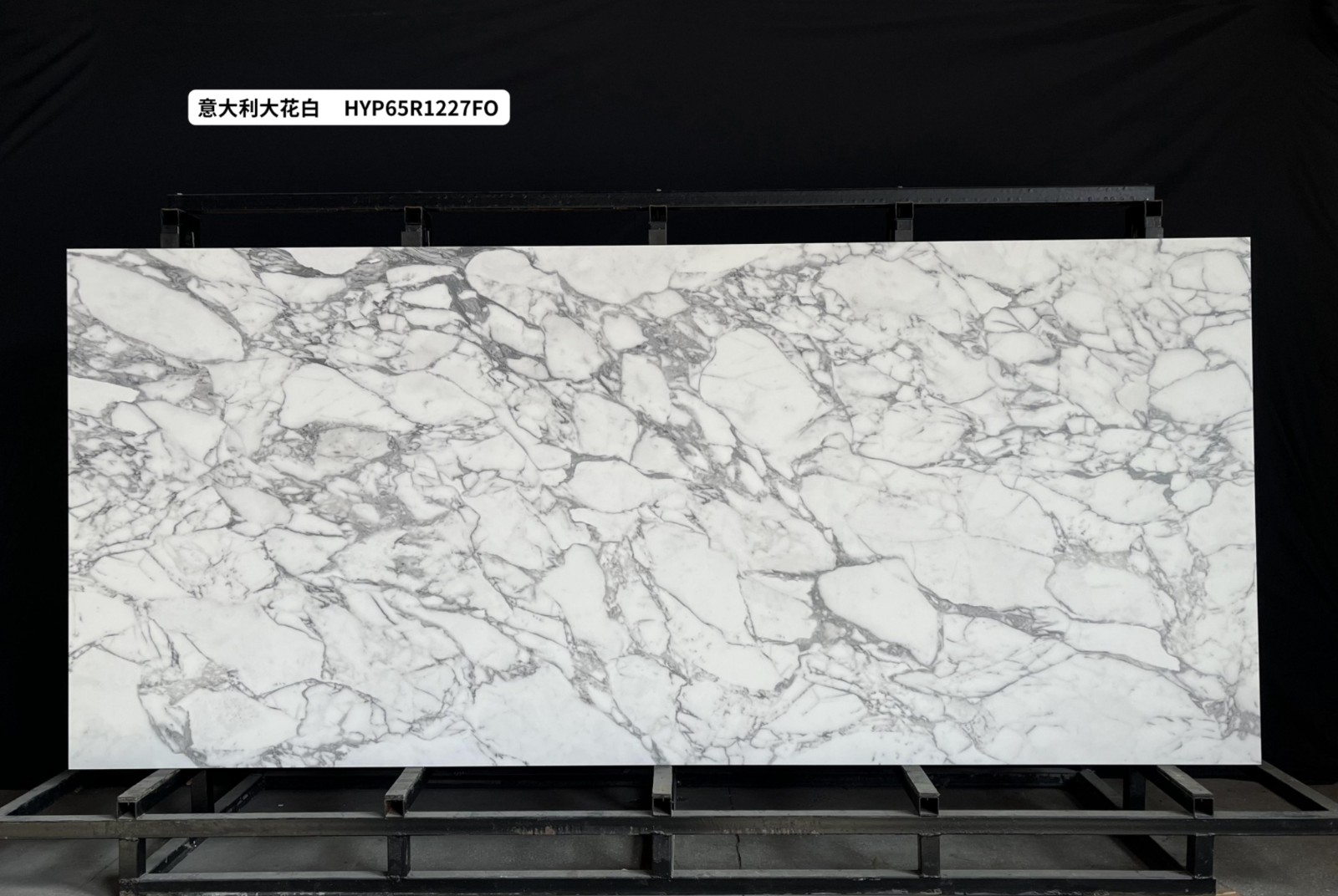Sintered stone slabs are extremely durable in everyday use, but with long-term use or accidental damage, they may develop cracks, chipping, scratches, and color variations.
This article addresses a common question among consumers and decorators: "Can you repair a sintered stone slab? How?"
This article provides comprehensive and professional answers to questions such as the material properties, damage types, repair techniques, procedures, and precautions for repairing sintered stone slabs, helping you understand the feasibility and specific methods of repairing sintered stone slabs.

Sintered Stone Slab: Material and Structural Characteristics
Sintered stone slabs are a high-density, hard composite material of artificial or natural minerals, manufactured through high-temperature sintering, pressing, or firing. Its key features include:
1. High Hardness and Abrasion Resistance
Sintered stone slabs typically have a hardness of 6-7 on the Mohs scale, making their surface hard, wear-resistant, and resistant to scratching. It is this high hardness that makes it so valuable for long-term use in flooring, countertops, and wall decoration.
2. Low Water Absorption and Corrosion Resistance
Sintered stone slabs typically have a water absorption rate of less than 0.5%, effectively resisting moisture penetration and acid and alkali corrosion, making them suitable for use in kitchens, bathrooms, and outdoor environments.
3. Thermal and Chemical Stability
Sintered stone slabs resist deformation under high temperatures, and their mineral structure is stable, preventing significant corrosion or discoloration from chemical contact.
4. Density and Limited Toughness
Despite their high hardness, sintered stone slabs are also quite brittle, making them susceptible to cracking or fracture when subjected to concentrated localized forces. This presents a key technical challenge in repairing sintered stone slabs.
In summary, sintered stone slabs offer the advantage of long-term durability. However, in practice, their high hardness coupled with their brittleness means that any repair requires precise control of material properties and construction techniques.

What are the common types of damage to sintered stone slabs?
Before discussing the question "Can you repair a sintered stone slab?", it's important to understand the common types of damage that sintered stone slabs can sustain during use:
1. Cracks
• Causes: High-intensity impact, ground subsidence, drastic temperature fluctuations, or improper installation.
• Characteristics: Cracks can be subtle surface cracks or extend into the slab itself.
2. Chipped Corners or Chips
• Causes: Handling, impact, or the dropping of heavy objects.
• Characteristics: Localized damage to the slab's edge, affecting its aesthetics and structural integrity.
3. Surface Scratches
• Causes: Scratches from sharp tools or friction from heavy objects.
• Characteristics: Visible surface marks and loss of gloss.
4. Color Difference or Slight Fading
• Causes: Localized chemical contamination or high temperature.
• Characteristics: The color of a localized area of the surface is inconsistent with the overall slab.
Each type of damage directly impacts the choice of repair technology and methods, so an accurate assessment of the damage is essential before repair.

Can you repair a sintered stone slab? Repairability
In response to the question, "Can you repair a sintered stone slab?" professional analysis indicates the following:
1. Crack Repairability
If cracks in a sintered stone slab are limited to the surface or shallow, caulking, resin, or specialized repair materials can restore the surface smoothness and aesthetics. Deep cracks that penetrate the slab require structural reinforcement techniques; otherwise, surface treatment alone cannot guarantee long-term durability.
2. Chipped Corner Repairability
Minor chipped corners can be filled, shaped, and polished to restore the original contour using epoxy resin or mineral repair agents. Large chipped corners or severely damaged edges, while repair is feasible, will likely not fully restore structural strength and may require reinforcement or partial replacement.
3. Scratch Repairability
Surface scratches can usually be restored to aesthetics through grinding, polishing, filling, or surface coating. Scratches on hard sintered stone slabs require specialized diamond grinding tools to ensure that no further damage is incurred.
4. Feasibility of Color Difference Repair
Color difference repair can be achieved through pigment matching, surface coating, or spot coloring. However, it is important to note that color adjustments must be performed under natural light to ensure a consistent overall visual effect.
Overall, most sintered stone slab damage is repairable, but the repair method should be carefully selected based on the type of damage and the characteristics of the slab.
How to Repair a Sintered Stone Slab? — Professional Methods
Sintered stone slab repair can be divided into two categories: structural repair and surface repair:
1. Structural Repair
Structural repair primarily targets cracks and chipped corners, restoring the integrity and load-bearing capacity of the sintered stone slab.
Crack Injection Method:
• Clean dust and impurities from the crack.
• Inject epoxy resin or high-strength repair adhesive.
• After injection, secure with a press plate or clamp to ensure the adhesive fully fills the crack.
• After the adhesive cures, polish and level the surface.
Chipped Corner Reinforcement Method:
• Clean the chipped corner and grind it into a wedge shape or flat surface.
• Fill with mineral repair compound or epoxy resin for initial shaping.
• After the glue cures, grind and polish until it is smoothly connected to the original surface.
• Use small steel wire or metal clamps to add structural support at the bottom (for large chipped corners).
2. Surface Repair
Surface repair mainly targets scratches, minor cracks, and color variations.
Scratch Polishing Method:
• Use a diamond grinding wheel or abrasive disc suitable for the hardness of the sintered stone slab.
• Grind the scratched area, gradually refining the surface until it is smooth.
• Finally, polish the repaired area to match the gloss of the original surface.
Color Variation Repair Method:
• Mix a special pigment or paint and apply color to the repaired area.
• Apply multiple layers to ensure the color depth matches the original surface.
• After the coating dries, lightly polish to restore the gloss uniformity.
Micro-crack filling method:
• Clean any dust from micro-cracks on the surface.
• Fill the cracks with clear or matching epoxy resin.
• After curing, polish to make the repair less noticeable.

What is the repair process for sintered stone slabs?
Combining structural and surface repairs, the standard repair process for sintered stone slabs is as follows:
1. Damage Assessment
• Identify the type and extent of cracks, chipping, scratches, and color variations.
2. Cleaning and Preparation
• Remove dust, oil, and loose particles to ensure a secure bond between the repair materials.
3. Repair Material Selection
• Choose epoxy resin, mineral repair compound, or specialized paint based on the type of damage.
4. Filling and Curing
• Fill any cracks, chipping, or micro-pitting, maintaining even compaction.
• Curing time depends on the material specifications, but is generally 24-48 hours.
5. Grinding and Polishing
• Grind from coarse to fine, and finally polish to match the original surface.
6. Inspection and Maintenance
• Inspect the repaired area for flatness, color matching, and structural stability.
• Avoid heavy impact after repair and maintain regular maintenance.
Precautions for Sintered Stone Slab Repair
• Material Compatibility: The repair material must be compatible with the sintered stone slab to prevent secondary damage or color shift.
• Operating Temperature and Humidity Control: The repair process should be performed at room temperature to avoid high humidity or extreme temperatures that may affect the curing effect.
• Specialized Tool Use: Diamond grinding wheels, specialized grinders, and polishing tools are required for high-hardness sintered stone slabs to ensure efficient and precise repair.
• Safety Precautions: Protective gloves, goggles, and a mask should be worn during repair operations to prevent damage from dust and chemicals.
"Can you repair a sintered stone slab? How?"
—Professional conclusions:
1. Repairability
Most damage to sintered stone slabs, including cracks, chipped corners, scratches, and color variations, can be repaired using scientific methods and specialized materials.
The aesthetics and some structural properties of a repaired sintered stone slab can be significantly restored, but extensive structural damage still requires careful evaluation.
2. Repair Methods
• Structural Damage: Crack Injection, Chipped Corner Reinforcement
• Surface Damage: Scratches Polished, Color Adjustment, Micro-Crack Filling
3. Operating Procedures
• Strictly follow the process of damage assessment, cleaning, filling, curing, grinding, polishing, and inspection.
• Professional standards must be followed for material selection, operating environment, tool use, and safety precautions.
In summary, sintered stone slab restoration is not only feasible, but also, through scientific and professional methods, can effectively restore the structural stability and visual beauty of sintered stone slabs, ensuring long-term use in everyday homes, commercial spaces, and public buildings.
Does WOWSLAB offer customized solutions for marble and sintered stone slabs?
Yes. WOWSLAB specializes in producing high-quality customized marble slabs and sintered stone slabs for both residential and commercial use. Our factory in China ensures precision and durability, while our company provides wholesale options, promotions, and low-price quotes for buyers. Whether you need bulk purchasing for a large project or a single customized slab, WOWSLAB delivers reliable, high-quality products.


